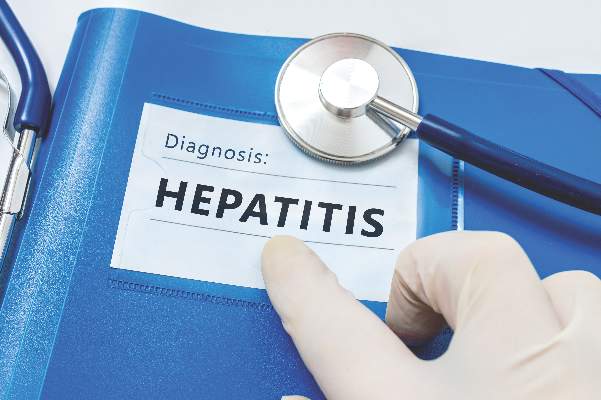If you work on the front lines of medical care treating patients with hepatitis, you may not have time to review all the hepatitis research that enters the medical literature every month. Here’s a quick look at some notable news items and journal articles published over the past month, covering a variety of the major hepatitis viruses.
Identification of a case of acute hepatitis C virus (HCV) infection in a frequent blood donor without other risk factors should be considered a sentinel event and should prompt public health investigation, according to research published in Morbidity and Mortality Weekly Report, because this could indicate a possible health care–associated infection.
Negative media reports about the safety of the hepatitis B vaccine in China harmed perception of the vaccine’s safety among patients, according to a recent study. Although the reports were erroneous, the failure of public health departments to communicate effectively contributed to a rise in the number of parents refusing to vaccinate their children.
An experimental, highly specific and sensitive HCV core antigen enzyme immunoassay (HCV-Ags EIA) was found to have the lowest limit of detection equivalent to serum HCV RNA levels of 150-250 IU/mL. Investigators found that the HCV-Ags EIA reliably differentiated viremic HCV infection from resolved HCV infection, thus accomplishing screening and diagnosis of viremic HCV infection in one step.
Loss of confidence in the hepatitis B vaccine following disproved allegations that the vaccine caused multiple sclerosis persists in France, according to research published in Human Vaccines & Immunotherapeutics.
The approval of the direct-acting antiviral agents (DAAs) grazoprevir and elbasvir with an indication for all levels of kidney function and dialysis has altered the landscape for the treatment of hepatitis C virus in patients with chronic kidney disease, according to a review in Clinical Liver Disease. The authors say this is because other DAAs are either not approved for use in patients with advanced chronic kidney disease or no safety data are available for the dialysis population.
A study in the Journal of Viral Hepatitis found that insulin resistance was associated with an increased risk for loss of vaccine-acquired anti-HBs (hepatitis B surface antigen) in a large sample of a nondiabetic, general population, indicating a possible role of insulin resistance in vaccine-induced immunity.
Grazoprevir, a second-generation HCV NS3/4A protease inhibitor, combined with ribavirin was associated with a rapid and sustained suppression of HCV RNA in a randomized study. The authors said the results support further evaluation of grazoprevir-based treatment regimens.
HIV–HCV coinfected patients treated with a fixed-dose combination of ledipasvir and sofosbuvir (LDV/SOF) showed significant improvement of their health-related quality of life and other patient-reported outcomes during treatment and after treatment cessation, according to a study in the Journal of Viral Hepatitis.
A Swedish study found that diabetes mellitus and cirrhosis are strong risk factors for hepatocellular carcinoma development after sustained virologic response (SVR) following treatment for chronic HCV has been achieved. However, the risk to develop hepatocellular carcinoma diminished significantly 2 years after SVR.
Chinese investigators said serum levels of platelet-derived growth factor (PDGF) decreased remarkably through fibrosis progression and could be used as a noninvasive biomarker for the assessment of fibrosis stage in patients with chronic hepatitis B virus (HBV).
A genome-wide association study of liver fibrosis progression in patients coinfected with HCV and HIV identified a new locus associated with fibrosis severity on chromosome 3p25. The authors said the results may help define new targets for drug development or new prognostic tests.
The RNA helicase DDX5 and E3 ligase Mex3b are important cellular targets for the design of novel, epigenetic therapies to combat HBV infection and poor-prognosis HBV-associated liver cancer, according to a study in Hepatology.
A Japanese study found that daclatasvir (DCV) and asunaprevir (ASV) dual therapy in hemodialysis patients infected with HCV is effective and safe with similar results, compared with patients with normal renal function.
A study evaluating the antiviral effect of ribavirin priming, and its influence on sustained virologic response after combination treatment, found that the lowest response pattern in HCV-infected patients was observed in prior nonresponder patients to pegylated interferon-alfa plus ribavirin combination therapy. The authors said this suggests that not only the individual interferon, but also the ribavirin sensitivity contributes significantly to the nonresponsive state.
A veterinary study provided evidence that hepatitis E virus is able to damage the blood-brain barrier and replicate in the brain and spinal cord .
An all-oral regimen of ledipasvir and sofosbuvir is an effective and safe treatment for a wide range of HCV genotype 4 subtypes in both treatment-naive and -experienced patients, including those with compensated cirrhosis, according to results of a recent study.
On Twitter @richpizzi



